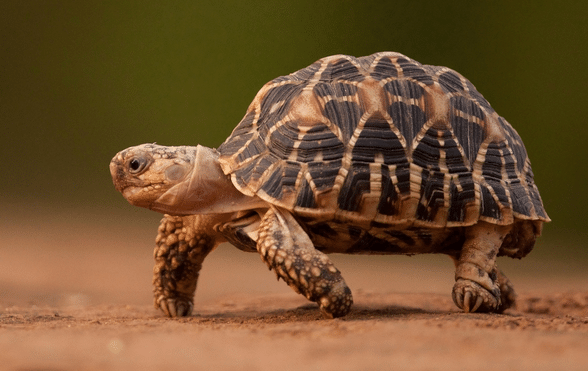Find out about the size, weight and care requirements for Testudo and Geochelone tortoises. A great article for beginners and those wanting to learn more about tortoise breeds.
Is your tortoise insured? Get a quote for £2,500 of vet fees, death and theft cover. Vet fee cover only also available | We’ve been insuring exotic pets since 1996 | Check out our customer reviews on Feefo.
David Alderton, editor of Practical Reptile Keeping, talks through the 4 most popular Mediterranean tortoise breeds in our video above.
The first thing that will usually catch your eye about a tortoise is its shell which is actually its ribs.
Tortoises can be very active and entertaining, but do require special care that is different from a mammal, because they are a reptile.
Some tortoise species are easier than others to care for as pets, while others grow very large
Read on to learn about:
- Pet tortoise species
- Best tortoise for beginners
- Article 10 regulation on tortoises
- Where can I buy a tortoise?
- Tortoises and hibernation
- What to expect when you bring your tortoise home
- Tortoise temperature
- Tortoise housing
- Best house tortoise
- Best cold weather tortoise
Pet tortoise species
The more commonly available tortoises are the:
- Horsfield (also known as Russian) tortoise (Testudo horsfieldii)
- Spur Thighed (Greek) tortoise (Testudo graeca)
- Hermann’s Tortoise (Testudo hermanni)
- and Marginated Tortoise (Testudo marginata)
Other tortoises that are available but not as common are:
- the Leopard Tortoise (Geochelone pardalis)
- Redfoot Tortoise (Geochelone carbonaria)
- Star Tortoise (Geochelone elagans)
- and the African Spurred (also known as Sulcata) tortoise (Geochelone sulcata).
All of these make great first tortoises but some require extra consideration.
Is your tortoise insured? Get a quote for £2,500 of vet fees, death and theft cover. Vet fee cover only also available | We’ve been insuring exotic pets since 1996 | Check out our customer reviews on Feefo.
Best tortoise for beginners
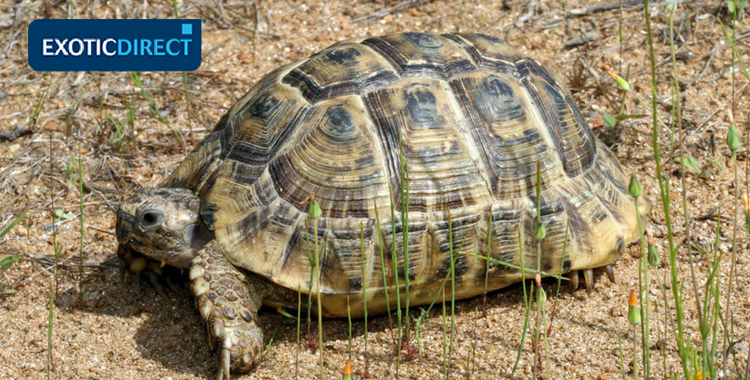
Spur Thighed (also known as Greek) tortoise
Spur Thighed (Greek):
The most commonly available and the easiest to care for is the Spur Thighed (Greek) Tortoise. These are readily obtainable through many of the outlets mentioned below.
They are active and remain relatively small reaching a size of 25cm with a weight of 2.5Kg on the average for the females with the males being smaller as is the case with all of the smaller tortoises.
There are a few different races which do vary in size with some being smaller and others being a little larger compared to each race.
Hermanns Tortoise:
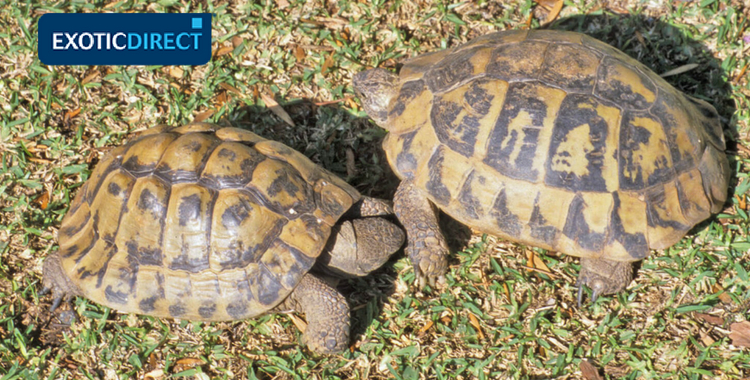
A pair of Hermann’s tortoises
Hermann’s Tortoise is the next desirable beginner’s tortoise and readily available.
Their size is slightly smaller than the size of the (Spur Thighed) Greek tortoise for the most part. The Hermann’s tortoise is also usually more active than the Spur Thighed. They also tend to have a more colourful shell making them more attractive.
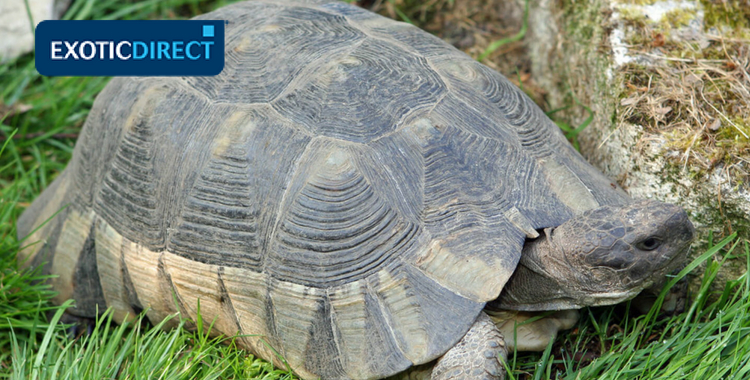
Adult marginated tortoise
The Marginated Tortoise
The Marginated Tortoise is similar to the Spur Thighed (Greek) and Hermann’s Tortoise but gets a little larger in size reaching 35cm in length with a weight of 5kg on the average. They are very similar to the Spur Thighed tortoise but are more elongated and larger in size.
The Marginated seems to be a little more outgoing and more active than the Spur Thighed tortoise but presents an added challenge because of its larger size and activity level. It may not be the best tortoise for beginners.
There can be a problem if there is more than one male because they are very territorial and aggressive as a result.
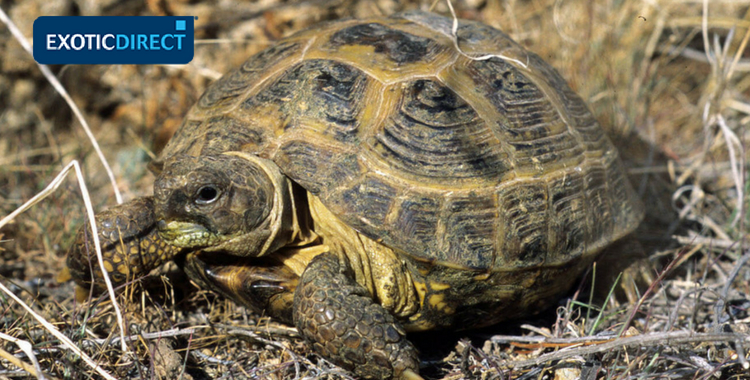
Horsfield tortoise (also known as Russian)
Horsfield (also known as Russian) tortoise
The Horsfield tortoise is a relatively small tortoise that is available mostly in pet shops and garden centres. They stay relatively small with adults reaching a size of 15 to 25cm and up 1.5 kg in weight. They are very active tortoises when they are active which is not very often.
They spend a great deal of time resting and buried down in the substrate or in a corner if the substrate is not deep enough.
The Horsfield (Russian) tortoise does not seem to like extreme high or low temperatures. This is why it is best to not let the temperature go above or below 30°C. If the temperature goes outside of their comfort zone they tend to become very inactive.
There are two more exotic tortoises. These are the Sulcata (also known as African Spurred) and the Indian Star tortoise.
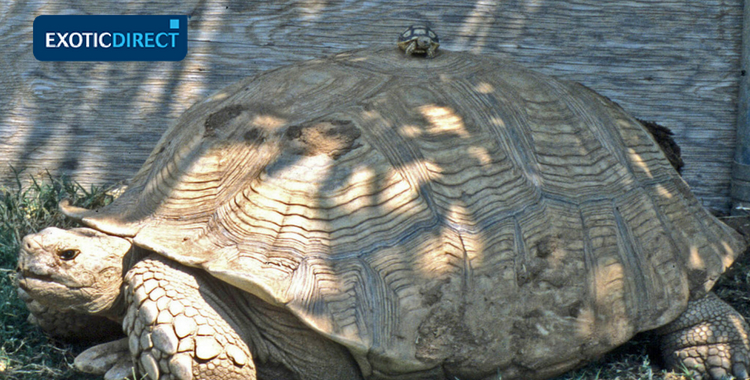
Adult and baby Geochelone Sulcata
Sulcata (African Spurred) tortoise
The Sulcata (African Spurred) tortoise are easily available at very inexpensive prices because they are commonly bred throughout the world.
The problem is the Sulcata gets very large. Obtaining one or more of these tortoises requires some serious thought to both spatial and financial considerations. The Sulcata can attain a size of over 80cm in length with a weight of over 90Kg.
Add to this that they are extremely active and you can have one very destructive reptile. However they are very easy to take care of and make great pets after the previous mentioned considerations.
The Sulcata is not the tortoise for the average keeper no matter how cute they are in the beginning. They grow and they grow fast if taken care of properly.
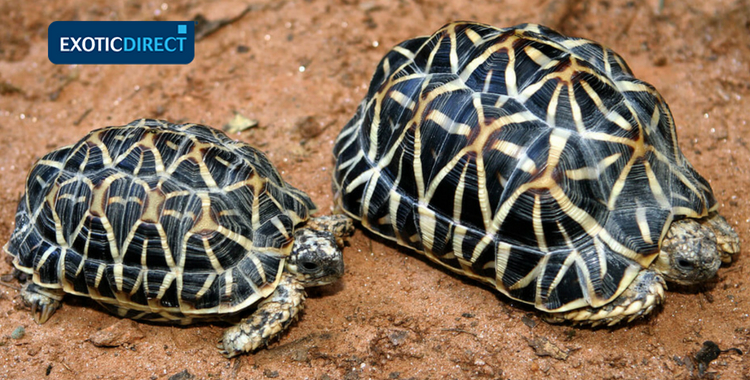
Male and female Indian Star tortoises
Indian Star
The Indian Star Tortoise is a very ornate tortoise that has yellow star patterns covering its black shell. They are available in some of the shops throughout the UK as a result of a very successful breeding program but they can be expensive. The Star Tortoise makes a great pet because it maintains a small size of 20 cm as adults with a weight of roughly 1kg. The males are typically half that size.
Insure your tortoise for £2,500 of vet fees. Get a quote or find out more.
How long do tortoises live?
All the species mentioned here can live over 75 years.
Article 10 regulation on tortoises
The Spur Thighed (also known as Greek), Hermann’s and Marginated tortoise fall into a group of tortoises that require a special permit in the UK.
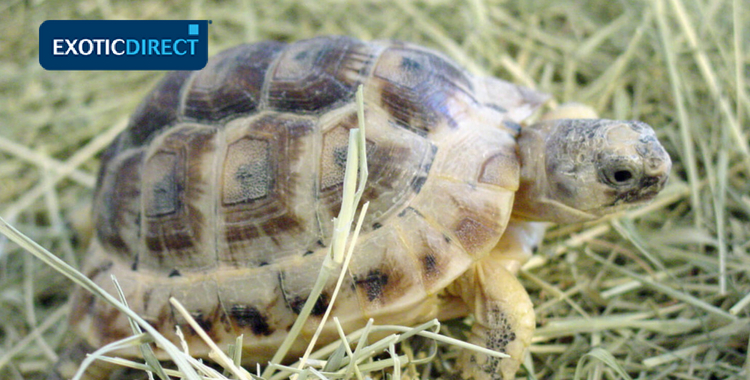
Juvenile Spur-Thighed tortoise – one species listed on Annex A in the UK.
This permit is commonly referred to as an Article 10 certificate, and the above tortoises fall into Annex A, which requires the special permit.
Annex A animals are considered endangered and as such the species need to be monitored to ensure they’re not illegally wild caught and then traded. You won’t need to do anything with regards to an Article 10 Certificate. But your seller or breeder will.
There are two types of Article 10 certificates. One is a Transaction Specific Certificate and is issued if the tortoise is under 60mm and too small to be chipped.
The breeder/seller should be named on the certificate, and the buyer should see the certificate when buying the tortoise. It’s recommended that the buyer takes a photocopy or a photograph of it. The certificate is valid for one sale only.
The other is a Specimen Specific certificate (SSC) and it’s issued showing the microchip number the tortoise is implanted with.
The SSC will be passed to you, and accompanies the tortoise for life.
All other tortoises mentioned in this article do not require an Article 10 certificate.
Where can I buy a tortoise?
There are many acceptable sources from which to obtain a tortoise which include animal rescues, breeders, pet shops and the internet.
In each category there will always be some that are better than others. Most of these sources offer excellent courier service for the animals but it is usually best to see the tortoise in person to be sure you are getting a healthy animal.
Tortoises and hibernation
The Spur-Thighed, Hermann’s, Marginated and Horsfield Tortoise all hibernate in their natural habitat. This is a biological mechanism to live through unfavourable conditions for survival.
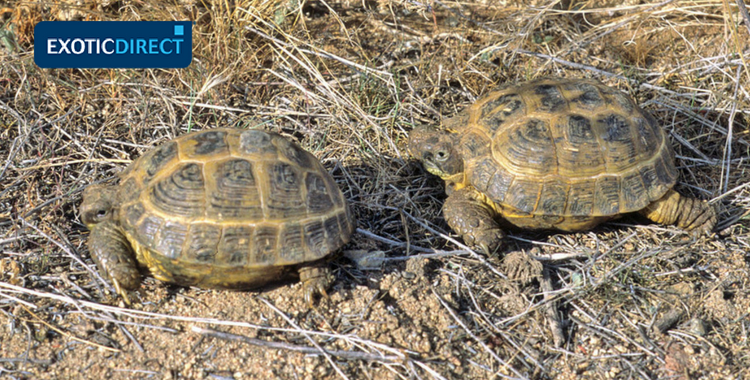
Horsfield tortoies male and female – these species hibernate
Hibernation is not a requirement and can present unnecessary risks.
It is always best to maintain favourable environmental conditions that allow the tortoise to carry on its day to day routine.
As you learn more about the animal you might consider hibernation on the tortoises’ terms.
Most believe it’s not worth the risk if it’s not necessary but some tortoises will do this naturally if the environmental conditions deteriorate to the point their metabolism slows down and they are forced to ‘sleep’.
Find out more about Tortoise hibernation
What to expect when you first bring a tortoise home
When a tortoise is placed in a new environment it will usually behave in an odd manner. Tortoises do not like change.
The tortoise will normally pace and refuse food for up to two weeks but usually less than that.
This should be of little concern as long as the tortoise settles down. During this period it is important to soak the tortoise regularly to maintain hydration.
The items to focus on in the order of importance are temperature, hydration, nutrition and housing.
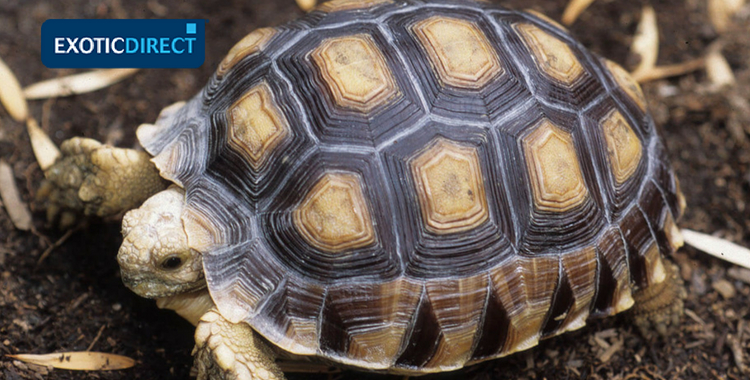
A young Sulcata – these start out small but become very big. They’re more suited for the outdoors.
Tortoise temperature
The temperature should be maintained about 30 degrees Celsius with a variation of plus or minus 5°C.
This can be accomplished by using a light bulb or a ceramic heat emitter to provide the required heat.
With both heat sources the room temperature the enclosure will be kept in will determine the power or wattage of the heat source that will be required.
When using a ceramic emitter a rheostat should be used to maintain the desired temperature. A rheostat is a variable switch which allows you to vary the current to the emitter which determines the heat the emitter puts out.
The temperature can be properly controlled by the rheostat when used in conjunction with a thermometer in the enclosure.
In line rheostats can be found at any hardware store if the fixture is not equipped with one.
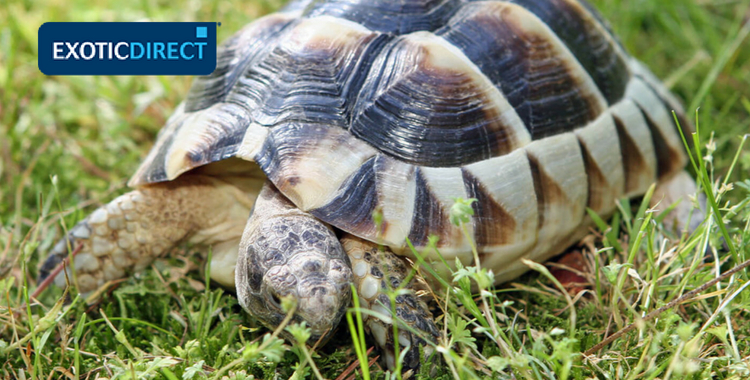
A baby Marginated tortoise foraging
How do tortoises stay hydrated?
Hydration is extremely important for tortoises, and you should provide water for both drinking, bathing and basking.
It is suggested that the tortoise have access to a shallow water dish at all times.
Hatchling and younger tortoises should be soaked in shallow warm water every day or two.
The depth of the water should be half way up the opening of the front of the shell to be on the safe side of preventing any chance of drowning.
A humid hide can be provided to give access to external hydration through respiration in addition to providing internal hydration by drinking.
Some believe that a humid hide decreases dehydration through respiration, in addition to aiding good shell development by keeping the outside of the shell moist. All tortoises benefit from a humid hide.
A humid hide is a small portion of the enclosure that is kept damp but not too moist. The portion of the enclosure can be a plastic box/hide with a water retaining substrate such as sphagnum moss, coconut coir, soil or any clean moisture retaining substrate.
The moist substrate can also be a portion of the enclosure with no cover. However this does increase the work of keeping the substrate moist.
It is important that the tortoise be allowed to dry out. It is for this reason that it is not recommended that the entire enclosure be moist. This is true for all tortoises.
It is also important that any soiled moist substrate be removed and replaced to prevent molding.

A Sulcata tortoise
Tortoise food
The important point is to focus on is complete nutrition. This can be provided through a large variety of dark leafy greens and vitamin supplements or by providing one of the good pellet diets that are commonly available.
The suggested course of action is to feed a pellet diet in conjunction with a good mix of greens such as Floret salad and a complete calcium supplement. Find out more about diet here.
Tortoise housing
The housing can be as simple or as complex as you like. The important point here is to provide as much space as possible.
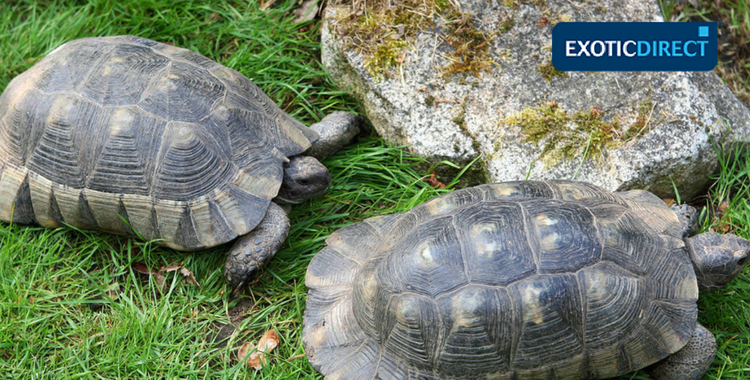
Male and female Marginated tortoises
Tortoise table
One popular enclosure for a tortoise is the Tortoise Table. This is no more than a box. It can be made of wood, plastic, metal or glass. You can buy a tortoise table.
Many use and suggest an old book case or chest of drawers. These are not recommended because the back of the book case/base of the drawers are usually made of flimsy material that falls apart easily when wet.
It’s suggest that if you go the route of the tortoise table that you have one constructed or construct one yourself.
The problem of the tortoise table is that it’s difficult to maintain that ever so important temperature if you live in a cool home.
Many keepers who live in cooler climates cover a good portion of the tortoise table in order to retain the much needed heat.
Tortoise vivarium
Another housing option is a vivarium. This can be a specially made container that has an opening either in the top or in one of the sides.
The use of vivariums is hotly debated in tortoise keeping. Many keepers, myself included, believe vivariums are essential for properly raising a tortoise in the first few years because it’s easier to maintain a good environmental temperature and conditions.
Many other keepers believe vivs should not be used for any tortoise. I firmly believe that vivs are perfectly acceptable for all species of tortoise as do other keepers.
The important point to remember when using a viv is to make sure that there is enough air circulation.
A good rule of thumb is to provide 15 cm² per m². An example would be that if you have a 1m² enclosure, two 2 cm² holes in the side and four 2 cm² holes in the length would be more than enough air circulation.
A fish tank is also acceptable provided that the top is partially open to allow for air circulation.
What bedding to tortoises need?
Once the housing has been decided it is time to add substrate.
You can use any substrate such as soil, sand soil mix, sand, coconut coir (ground coconut husk), aspen bedding and wood chips.
It’s suggested to use a substrate that is not too coarse or not too fine. The tortoise should be able to burrow into the substrate to cover itself.
Hatchlings and smaller tortoises seem to like this activity best. Along with the substrate you can add furniture such as logs and rocks but be careful when placing furniture so as not to make it too crowded.
Also be mindful when placing structures in the enclosure so as not to provide objects that will aid the tortoise in flipping itself over by allowing the tortoise to climb and fall on its back.
Best house tortoise
Any tortoise can live indoors or outdoors. The smaller species will be easier to maintain indoors but no tortoise is better than any other in regards to living indoors or out.
It’s always better to keep any tortoise outdoors whenever possible but this is not always possible due to cold weather.
All tortoises can be maintained indoors very successfully for their entire life. It just takes a little more preparation and care.
Best cold weather tortoise
There is no tortoise that is really cold tolerant although the Testudo can handle cooler temperatures better than most other tortoises.
The Star Tortoise is the only one mentioned that is the least cold tolerant. It cannot handle temperatures below 30°C very well where it can develop respiratory problems.
Hopefully this brief guide will help the new tortoise keeper with the decisions they have to make before bringing home a pet tortoise.
Is your tortoise insured? Get a quote for £2,500 of vet fees, death and theft cover. Vet fee cover only also available | We’ve been insuring exotic pets since 1996 | Check out our customer reviews on Feefo.

